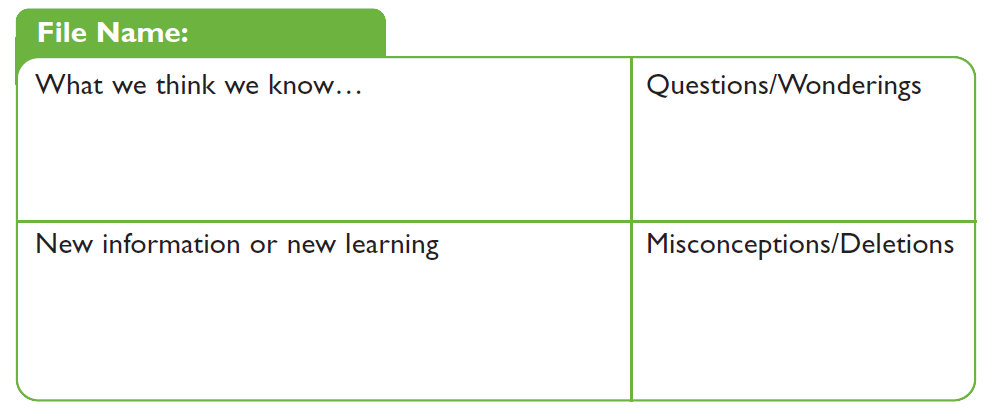This instructional process likens students’ non-fiction exploration (for a report or historical retelling) to the act of logging on to their computer. In order for new information to become new learning for primary students, it must sit comfortably in their background knowledge of the subject. The analogy of a computer facilitates this process.
Strategies/Skills Used
Writing Skill 2: I organize my ideas.

(1) Recall with students the information that is stored in our brains, everything from family and friends, to special skills we have, to a personal calendar of events, to images and stories that have impacted our lives. Share a true story from your memory to inspire students to do the same. Have students share true stories with partners. Initiate discussion about how vast our brains are to hold such a diversity of information. (In upper primary, this exploration can be extended to a written activity; students may choose to web, map, or simply list some of the things they have stored in their memories).
(2) Liken this brain exploration to the language of computers, and introduce the idea of files for storing information. Introduce a topic for exploration – for example, “pirates” – and have students share information from the “files in their brains.”
(3) Record, on sticky notes, class connections to the topic, and post ideas on the board or chart paper. Accept all ideas, even misconceptions that arise. Help students make connections between ideas that are similar by physically attaching one sticky note to another. Elicit student ideas for additional connections. Introduce the concept of “files” creating a “folder” to help students organize their thinking.
(4) Partition an available bulletin or magnetic board with tape to represent sections of a file:
(5) Gather books and pictures about the topic (in this case, “pirates”). Model how to extract information from texts. Record what is important as simply as possible. Continue reading, and encourage students to respond when they hear something interesting by recording their comments on sticky notes.
(6) Review new information, and where the text confirms previously recorded thinking, mark sticky notes with a ‘c’ for confirmed. When research reveals a misconception, physically move sticky notes to the misconception box and talk to students about changing our thinking. Record what students wonder; student questions will guide further exploration.The posting of all thinking on sticky notes on the board makes the thinking very visible and anchors this process.
(7) Introduce to the whole group the literature you have provided to begin researching new information. Ensure that students are matched with a book they can read and pictures that provide information. Provide each student with one sticky note to record an important fact. Circulate as students try this process, and guide students to record information accurately.
(8) Bring the groups together to post new learning on the master file. Re-model the process of linking their thinking by attaching sticky notes, first in the new learning portion, and then engage the class in matching their sticky notes if new information confirms something in their background knowledge.
 Primary
Primary
Intermediate
- [No activities yet]
Secondary
- [No activities yet]
